The Ten Best History Books of 2024
Our favorite titles of the year resurrect forgotten histories and examine how the United States ended up where it is today
:focal(800x602:801x603)/https://tf-cmsv2-smithsonianmag-media.s3.amazonaws.com/filer_public/01/6e/016e6063-bec1-4c36-bae3-615f678c2853/booklist-2024-history-v3.jpg)
As the United States approaches the 250th anniversary of its founding in July 2026, the nation must confront a stark reality: Americans are more polarized than they’ve been in decades. Among the key points of contention is the way the U.S. remembers—and teaches—its history.
“We have these two completely bipolar versions of American history,” Jon Grinspan, a curator at the Smithsonian’s National Museum of American History, tells Politico. “One is that everything’s been perfect and we had this wonderful heritage. And the other is everything’s evil and horrible.”
The truth, Grinspan adds, is that the system has never “fully worked, but also [that it] isn’t evil and the end of the world.” The curator’s latest book, Wide Awake: The Forgotten Force That Elected Lincoln and Spurred the Civil War, tells the stirring story of the Wide Awakes, a group of cape-wearing activists who called for the abolition of slavery in antebellum America. These young people “couldn’t agree on much, but [they] marched side by side against [what they viewed as] the greatest threat to democracy,” writes Grinspan in an op-ed for the Washington Post. At a time of unprecedented division, the Wide Awakes’ message of unity feels more prescient than ever.
Wide Awake: The Forgotten Force That Elected Lincoln and Spurred the Civil War
A propulsive account of our history's most surprising, most consequential political club: the Wide Awake antislavery youth movement that marched America from the 1860 election to the Civil War
This spring, a two-year survey conducted by the American Historical Association concluded that “most of the curriculum in the United States that is typically used by most teachers is perfectly defensible against charges of either liberal indoctrination or conservative chauvinism,” said research coordinator Nicholas Kryczka. According to the report, most educators tend to base their lesson plans on nonpartisan sources like the Library of Congress and other federal museums, archives and institutions. Still, since January 2021, at least 44 states have introduced measures restricting the teaching of critical race theory or limiting classroom discussions of racism and sexism, an Education Week analysis found.
“If there is any wholly inaccurate message being sent by our public schools to millions of students and their families,” the report stated, “it is that history is not important enough to command time, attention and public resources.”
Against this backdrop, the ten history books we’ve chosen to highlight this year served a dual purpose. Some reflected on the fraught nature of the current moment, detailing how the nation’s past—including lynchings in the Jim Crow South and a New Deal culture war—informs its present and future. Others offered a respite from today’s reality, transporting readers to places like Restoration England and ancient Egypt. From a biography of Harriet Tubman to the story of a failed utopia on the Galápagos Islands, these are ten of Smithsonian magazine’s favorite history books of 2024.
The Missing Thread: A Women’s History of the Ancient World by Daisy Dunn
In the introduction to The Missing Thread, classicist Daisy Dunn advises readers that her book isn’t “about women.” Instead, it’s “a history of antiquity written through women as far as this is possible, [aiming] to bring women to the fore without distorting the reality of events by pretending that men were not usually in charge.” This approach serves Dunn well, allowing her to offer up a sweeping chronicle of 3,000 years of history, as seen through the eyes of colorful individuals like Enheduanna, a Sumerian priestess and poet who was the world’s first named author, and Cornelia, a daughter of the Roman general Scipio Africanus and the fiercely independent mother of two reform-minded Roman senators.
Accentuated by Dunn’s translations of ancient texts, The Missing Thread is a treat for ancient history buffs and women’s history enthusiasts alike. Some featured figures, like Cleopatra, are well known, while others, like Fulvia and Octavia, the third and fourth wives of Roman general Mark Antony, are more obscure. In an original essay for Smithsonian, Dunn shifted the spotlight to these lesser-known claimants to Antony’s love, revealing how Fulvia went to war to protect her husband’s hold on power and how Octavia navigated her divided loyalty to both Antony and her brother, the future Roman emperor Octavian. After Antony and Cleopatra, the general’s fifth wife, died by suicide in 31 B.C.E., the “ever-magnanimous [Octavia] agreed to raise the surviving children of both Cleopatra and Fulvia together with her own,” Dunn wrote in the essay. “Love conquered rivalry.”
The Missing Thread: A Women's History of the Ancient World
In this monumental work, Daisy Dunn reconceives our understanding of the ancient world by emphasizing women's roles within it.
No Road Leading Back: An Improbable Escape From the Nazis and the Tangled Way We Tell the Story of the Holocaust by Chris Heath
In June 2016, the New York Times published an article about the discovery of a forgotten escape tunnel dug by Jews in Lithuania during World War II. Reading this news story launched journalist Chris Heath’s multiyear mission to uncover the full story behind the prisoners’ daring bid for freedom. But as the author explains in No Road Leading Back, his exhaustively researched, nearly 600-page account of the escape and its aftermath, the book he ended up with isn’t the one he initially set out to write.
The first part of No Road Leading Back documents the atrocities that took place in Lithuania’s Ponar forest between 1941 and 1944. Over that three-year period, the Nazis murdered at least 70,000 people in Ponar, the overwhelming majority of them Jews, shooting victims at close range and discarding their bodies in mass graves. In early 1944, as the tide of the war turned irreversibly in the Allies’ favor, the Nazis sought to hide evidence of their crimes by forcing Jewish captives to dig up and burn the remains. It was these men who secretly dug a tunnel that enabled 12 of their comrades to escape and, eventually, testify to what they had seen at Ponar.
Parts two and three of Heath’s book revisit Ponar from several different angles, discussing how the story of the mass killings has, and hasn’t, “been told over the years, and the reasons why, and the unpredictable profusion of consequences,” the author writes. He adds, “Much of the time, this is also the narrative of how Ponar’s history has been used or repurposed or discarded according to the needs either of those telling it or of those choosing not to tell it.” Heath’s exploration of how the Holocaust has been memorialized—or weaponized, as in the former Soviet Union—feels particularly timely one year into the Israel-Hamas war. In the past few weeks alone, a United Nations special committee deemed Israel’s military campaign in Gaza “consistent with genocide,” and a report by the Anti-Defamation League Center on Extremism recorded a “significant spike in antisemitic incidents” across the U.S.
No Road Leading Back: An Improbable Escape From the Nazis and the Tangled Way We Tell the Story of the Holocaust
This account of prisoners who dug their way to freedom from the Nazis is both a stunning escape narrative and an object lesson in the ways we remember and continually forget the particulars of the Holocaust.
Eden Undone: A True Story of Sex, Murder and Utopia at the Dawn of World War II by Abbott Kahler
Abbott Kahler has a gift for unearthing long-overlooked scandals, from the murder of a Jazz Age bootlegger’s wife to the trial of a supposedly sleepwalking killer. Now, in Eden Undone, the Smithsonian contributor and author turns her attention to Floreana, a tiny island in the Galápagos archipelago where eight people settled in the early 20th century “with one common desire: to create a utopia.” Some sought an escape from the ghosts of World War I; others hoped the tropical climate would prove restorative. Ultimately, Kahler writes, “Each of them had different visions as to what a utopia might be.”
Floreana’s list of aspiring settlers reads like a script for a Hollywood epic, incorporating “a doctor and his patient; a war veteran, his pregnant lover and his teenage son; and a Viennese noblewoman with two male lovers by her side and a pearl-handled revolver on her hip.” Fittingly, the doomed utopia these individuals created is also now the subject of Eden, a new movie from director Ron Howard. Starring Jude Law, Vanessa Kirby and Sydney Sweeney, the film, which debuted at the 2024 Toronto International Film Festival, isn’t directly inspired by Eden Undone. But both accounts weave a dark tale of romantic intrigue, betrayal and perhaps even murder. As the harsh realities of eking out a life on a remote island set in, tensions on Floreana rose, and the islanders’ competing concepts of utopia came to the fore. Told in lively, propulsive prose, Kahler’s examination of the community’s rise and fall is a page-turner that will be difficult for readers to put down.
Eden Undone: A True Story of Sex, Murder and Utopia at the Dawn of World War II
An incredible true story of murder, romance and a fateful search for utopia in the Galápagos
We Refuse: A Forceful History of Black Resistance by Kellie Carter Jackson
Nonviolence has long been touted as the only “acceptable” form of Black resistance to white supremacy, promoted by the likes of civil rights activists Martin Luther King Jr. and John Lewis, writes Kellie Carter Jackson, a historian at Wellesley College, in We Refuse. But Black Americans have long embraced alternative methods that extend “beyond nonviolence,” she adds, from the eponymous refusal of the book’s title to “revolution, protection, force, flight and joy.”
As an example, Jackson cites her great-grandmother Arnesta, who contracted an infection after stepping on a rusty nail in 1915. Desperate to save her 9-year-old daughter, Arnesta’s mother sought the aid of a white doctor, who demanded a heavy price for his help: Once healed, Arnesta would have to live with his family and work for them for the rest of her life. Though Arnesta’s mother initially agreed to this proposal, her own mother, a formerly enslaved woman, stepped in to stop the exchange. Arnesta recovered thanks to her grandmother’s natural remedies, but she walked with a limp for the rest of her life.
“My ancestor’s refusal was fundamental to her granddaughter’s survival,” Jackson writes. “She did not plead or bargain with the doctor. She did not try to convince him that Arnesta was a child or human. Her refusal, remedy and protection transcended violence or nonviolence. … Violence against [the doctor] would have been a death sentence for them, but nonviolence would also have ensured my great-grandmother’s death.”
Beyond her personal history, Jackson draws on stories of resistance across the ages. La Mulâtresse Solitude, a young woman who was hanged in 1802 for participating in an uprising against French forces on the Caribbean island of Guadeloupe, “represents the precarity of freedom in the New World, a life that was stolen, then recovered, and, in the cause of freedom, lost again,” the historian writes. In 1856, 22-year-old Margaret Garner escaped from slavery with her family; when authorities closed in on the fugitives, Garner killed one of her children and attempted to kill three others, illustrating the “desperate lengths Black women were willing to go to in order to obtain either liberty or deliverance through death,” according to Jackson. Across the country, the story of Garner’s tragic choice helped “dispel the myth of ‘happy and contented’ slaves,” further empowering the antislavery movement. Together, the anecdotes shared in We Refuse testify to “a much broader range of tools” for combating oppression than simply nonviolence, which “on its own,” Jackson argues, “is not at all expansive enough to rectify the harm that has been caused by racism.”
We Refuse: A Forceful History of Black Resistance
An “unsparing, erudite, and incisive” (Jelani Cobb) reframing of the past and present of Black resistance—both nonviolent and violent—to white supremacy
Night Flyer: Harriet Tubman and the Faith Dreams of a Free People by Tiya Miles
Despite her prominence in the annals of American history, Harriet Tubman has never received the level of scholarly attention afforded to other giants of the nation’s past. Instead, she’s celebrated as more of a mythic figure, the specifics of her arduous journeys on the Underground Railroad overlooked in favor of sweeping heroic narratives. Night Flyer, the latest book by Harvard University historian Tiya Miles, seeks to correct this imbalance, building on the work of biographers like Kate Clifford Larson and Catherine Clinton to present a clear-eyed portrait of the abolitionist and activist.
“By turning Tubman into a superhero with vague ‘woo-woo’ powers, we diminish her in memory and reduce our capacity to learn from her life,” Miles writes. “This simplistic superwoman-of-the-swamps myth obfuscates at least two critical elements of [her] character: who she was on the inside and how she saved lives.”
Instead of recounting every chapter in Tubman’s life, Miles focuses on the Underground Railroad conductor’s “eco-spiritual worldview,” examining how her deep faith and understanding of the natural world, including astronomy, botany and geography, helped her shepherd some 70 people to freedom from slavery. Like Miles’ 2021 book, the National Book Award-winning All That She Carried: The Journey of Ashley’s Sack, a Black Family Keepsake, Night Flyer is a painstakingly researched, evocative celebration of Black women’s resilience in the face of overwhelming odds.
Night Flyer: Harriet Tubman and the Faith Dreams of a Free People
An intimate and revelatory reckoning with the myth and the truth behind an American everyone knows and few really understand
Silk: A World History by Aarathi Prasad
In the tradition of one-word nonfiction titles like Salt, Stiff and Sapiens, Aarathi Prasad’s Silk provides an engaging, exhaustive overview of a single topic, in this case the titular natural fiber. Blending the University College London researcher’s background in science and the humanities, Prasad’s book upends common conceptions about silk, moving beyond the well-trodden history of China and the Silk Road to explore lesser-known sources of the fiber, including mollusks and spiders. Along the way, the scholar shines a light on historical figures like Shaikh Zain ud-Din, an 18th-century Indian artist who painted illustrations of silk moths, and Ramón María Termeyer, a Spanish priest who studied silk-producing animals, especially spiders, in mid-18th-century South America.
“Because there is not just one silk, there is not just one story of silk,” Prasad writes in Silk’s introduction. “Not one road, not one people who found it, nor one nation that made it. Not one country can lay claim to its source. In silk is science and history, mythologies and futures. … What follow are stories from [silk’s] many metamorphoses: caterpillar to moth; cocoon to commodity; simple protein chains to threads with very extraordinary capabilities.”
Silk: A World History
Throughout history, across cultures and countries, silk has reigned as the undeniable queen of fabrics, yet its origins and evolution remain a mystery. This is the story of how it left its mark on humanity.
The Lost Queen: The Surprising Life of Catherine of Braganza—the Forgotten Queen Who Bridged Two Worlds by Sophie Shorland
As far as British queens go, Catherine of Braganza is among the more obscure, overshadowed by figures like Anne Boleyn and Queen Victoria. The wife of Charles II, whose ascension to the throne in 1660 marked the restoration of the British monarchy after the upheaval of civil war, Catherine is remembered, when she is remembered at all, for enduring her husband’s infidelity and the elevation of his many mistresses.
Contrary to popular characterizations, Catherine was not simply an “unintelligent, cheated-on wife who had very little impact on the world,” writes Sophie Shorland in The Lost Queen. In truth, the author adds, she was a “woman of her time, living in an era of immense scientific, global and social change, who had a profound impact on the world around her.” The daughter of a Portuguese king, Catherine came to England in 1662, bringing with her a dowry of trading posts in Bombay and Tangier—holdings that helped the British expand their nascent empire. “Her arrival … was heralded as a union of two oppressed powers” fighting back against Spain, Shorland notes, and for the duration of her reign, she was a strong advocate for Portuguese independence. Outside of the realm of diplomacy, Catherine was a tastemaker who popularized tea and patronized the arts, a fun-loving queen despite her strict Catholic faith.
Because Catherine and Charles’ marriage bore no surviving children, the king’s younger brother James II inherited the throne upon Charles’ death in 1685. Catherine outlived her husband by 20 years, returning to her home country and even serving as regent of Portugal. As Shorland argues, “The alliance with England that Catherine helped to forge would prove important many times throughout the nations’ joint history,” from Napoleon Bonaparte’s invasion of the Iberian nation in the early 19th century to Portuguese aid to the Allies during World War II.
The Lost Queen: The Surprising Life of Catherine of Braganza―the Forgotten Queen Who Bridged Two Worlds
An enthralling and vivid portrait of Queen Catherine of Braganza, wife of Charles II, that reveals her forgotten place in history
The Playbook: A Story of Theater, Democracy and the Making of a Culture War by James Shapiro
“The health of democracy and theater, twin-born in ancient Greece, have always been mutually dependent,” argues James Shapiro, a literary scholar at Columbia University, in The Playbook. This assessment rings just as true today, amid contemporary culture wars over the value of the arts, as it did in the 1930s, when congressional agitators labeled a New Deal initiative called the Federal Theater Project an “un-American activity.”
Launched in 1935, the project staged more than 1,000 productions in 29 states over its four-year existence. Around 30 million Americans, many of whom had never seen a play before, attended these performances, which included a production of Macbeth with an all-Black cast and an adaptation of Sinclair Lewis’ anti-fascist novel It Can’t Happen Here. Under the leadership of Vassar College professor Hallie Flanagan, the Federal Theater Project created thousands of jobs at a time of mass unemployment and poverty. The program also presented a decidedly progressive vision of the nation, with Flanagan telling colleagues, “If, in making people laugh, which we certainly want to do, we can’t also protest … against some of the evils of this country of ours, then we do not deserve the chance put into our hands.”
Unsurprisingly, the project’s productions soon caught the attention of Martin Dies, the congressman who established the House Un-American Activities Committee, an investigative body later weaponized during the 1940s and ’50s hunt for communist influences. Badgering Flanagan on the stand, Dies accused the Federal Theater Project of fomenting divisions between Americans and promoting communist conspiracies. As Shapiro writes in his timely, engrossing account of a moment with stark parallels to the present, Dies’ efforts—which culminated in the dissolution of the project in 1939—emphasized “strategies [that] coalesced into a right-wing playbook, widely used today, for securing power and challenging progressive initiatives.”
The Playbook: A Story of Theater, Democracy and the Making of a Culture War
A brilliant and daring account of a culture war over the place of theater in American democracy in the 1930s
The Wide Wide Sea: Imperial Ambition, First Contact and the Fateful Final Voyage of Captain James Cook by Hampton Sides
In his latest book, Hampton Sides—one of the great nonfiction writers of the 21st century—demonstrates the same verve for storytelling that made previous works like Ghost Soldiers and In the Kingdom of Ice best sellers. Drawing on journals, ships’ logs and other primary sources, the historian tells the tale of Captain James Cook’s final voyage to the Pacific, which ended with the British explorer’s death at the hands of a crowd of Hawaiians in 1779.
Though Cook’s three expeditions to the region were once viewed as “swashbuckling adventures—worthwhile and perhaps even noble projects undertaken in the service of the Enlightenment and the expansion of global knowledge,” Sides writes in The Wide Wide Sea, the captain’s name has since become synonymous with colonialism and Eurocentrism. “Cook, in some respects, has become the Columbus of the Pacific,” the historian argues.
Sides’ book does not seek to “lionize, demonize nor defend” Cook. Instead, the author presents the facts of this final voyage, noting Cook’s well-documented shift toward irritability during the last years of his life, whether due to “a physical or mental malady [or] perhaps even a spiritual one”; the captain’s failed search for a Northwest Passage between the Atlantic and Pacific Oceans; and his increasingly tense encounters with Pacific Islanders, who, in sharp contrast to Cook, viewed resources like the iron on the British ships as communal property.
Though Cook is the saga’s central character, plenty of other individuals take center stage, too. Chief among them is Mai, a young Polynesian man who joined one of the ships on Cook’s second expedition and returned with the crew to England, where he brushed shoulders with Britain’s upper crust. After spending a few years abroad, Mai yearned to return home, so Cook agreed to drop him off en route to the fabled Northwest Passage. Mai settled on the island of Huahine, but he struggled to assimilate back into Polynesian society, and his exact fate is unknown. “[Mai’s] odyssey led him, in the end, to an ambiguous place,” writes Sides. “His journey served as an allegory of colonialism and its unintended consequences. England, by showing off her riches and advancements and sending Mai back with a trove of mostly meaningless treasures, had doomed him to a jumbled, deracinated existence.”
The Wide Wide Sea: Imperial Ambition, First Contact and the Fateful Final Voyage of Captain James Cook
A story of adventure on the high seas and a searching examination of the complexities and consequences of the Age of Exploration
The Barn: The Secret History of a Murder in Mississippi by Wright Thompson
The Barn originated as a 2021 feature in the Atlantic. Written by journalist Wright Thompson, the magazine article revisited the murder of Emmett Till, a 14-year-old boy who was lynched in Mississippi in 1955 after a white woman accused him of whistling suggestively at her. The teenager’s mother, Mamie Till-Mobley, decided to publish photos of her son’s battered body in Jet magazine, forcing Americans to confront the visceral violence exacted on him. Her choice helped galvanize the civil rights movement, exposing the brutality of life in the Jim Crow South.
In both the Atlantic piece and the book it inspired, Thompson argues that a major element of Till’s story has long been overlooked: the barn where the boy was tortured and killed. For decades after the murder, the author writes, the building “was just some guy’s barn, full of decorative Christmas angels and duck-hunting gear, sitting there in Sunflower County without a marker or any sort of memorial, hiding in plain sight, haunting the land.” Though Thompson grew up on a farm just 20 miles away, he only learned of the barn’s existence in 2020, when a community organizer pointed it out as a lesser-known site associated with the murder. Over the next four years, Thompson embarked on a far-reaching reporting venture, drawing on hundreds of interviews, eyewitness accounts, academic tomes and archival documents to piece together the story of Till’s final hours.
Though just two men were tried—and acquitted—for the murder, Thompson’s research suggests eight were present in the barn on the night of Till’s killing. “What does it matter whether there were two people or eight on hand?” the journalist asks. “I’ve come to believe these details mean everything. … The covering up of Till’s murder was not something that was perpetrated by a few bad apples. It couldn’t have been. The erasure was a collective effort, one that continues to this day.” Part memoir, part reportage, Thompson’s book is not only an elegiac tribute to a child whose life was cut short too soon, but also a searing indictment of the system that enabled the lynching and the subsequent cover-up.
The Barn: The Secret History of a Murder in Mississippi
A shocking and revelatory account of the murder of Emmett Till that lays bare how forces from around the world converged on the Mississippi Delta in the long lead-up to the crime, and how the truth was erased for so long
Editor's Note, December 2, 2024: This article previously stated that Senator Joseph McCarthy weaponized the House Un-American Activities Committee during his hunt for communist influences. In fact, McCarthy had no direct involvement with the House committee.
A Note to our Readers
Smithsonian magazine participates in affiliate link advertising programs. If you purchase an item through these links, we receive a commission.
/https://tf-cmsv2-smithsonianmag-media.s3.amazonaws.com/accounts/headshot/mellon.png)
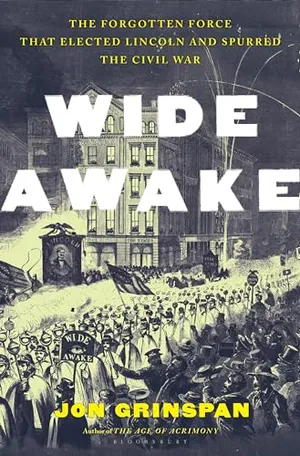
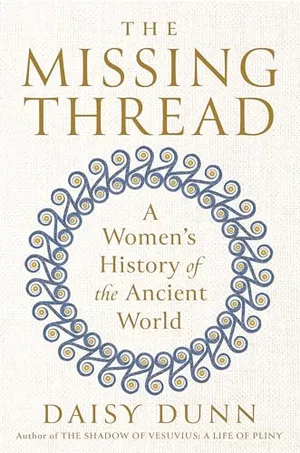
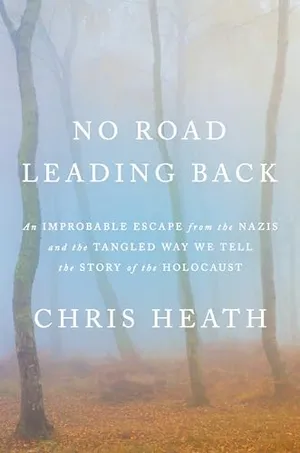
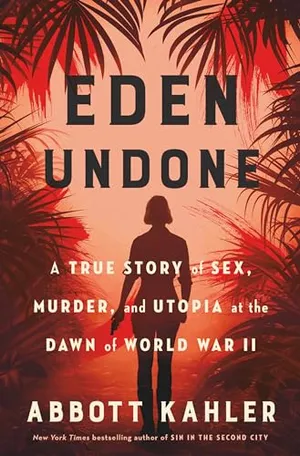
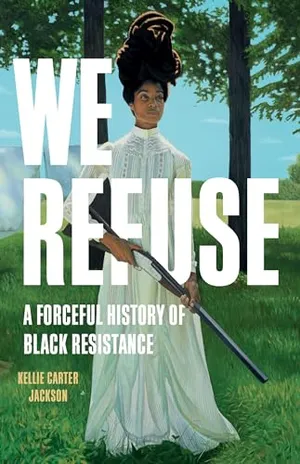
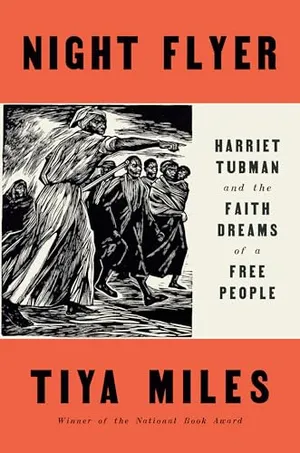
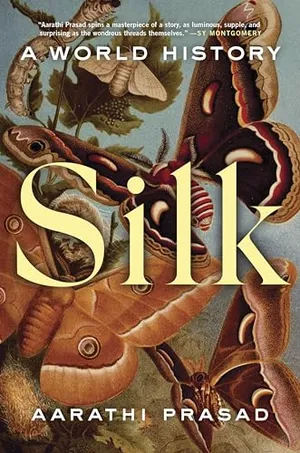
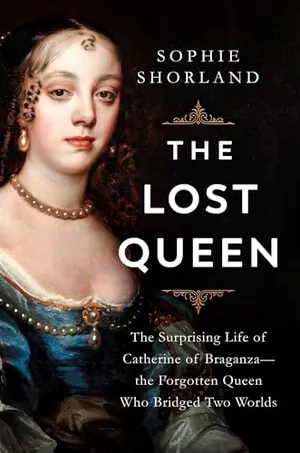
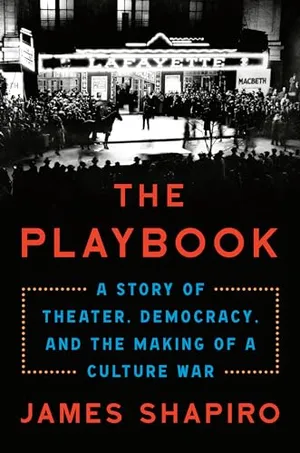
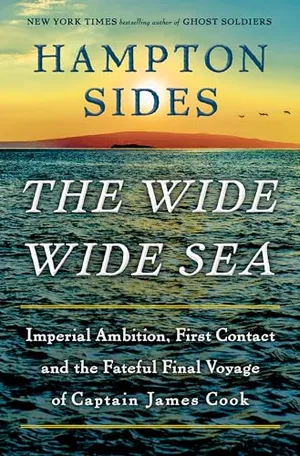
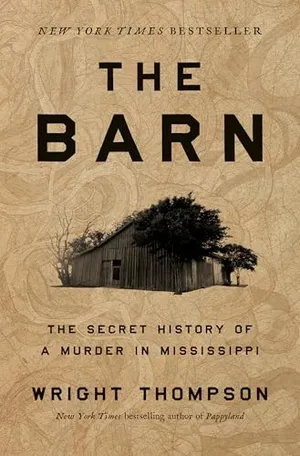
/https://tf-cmsv2-smithsonianmag-media.s3.amazonaws.com/accounts/headshot/mellon.png)